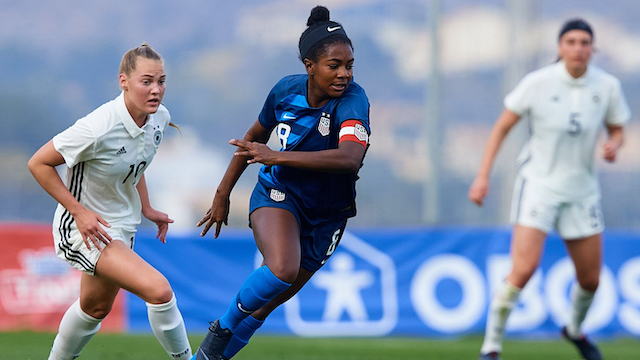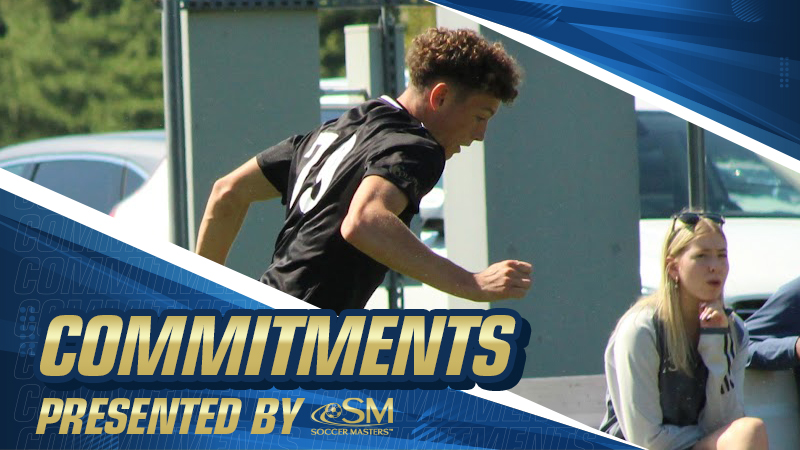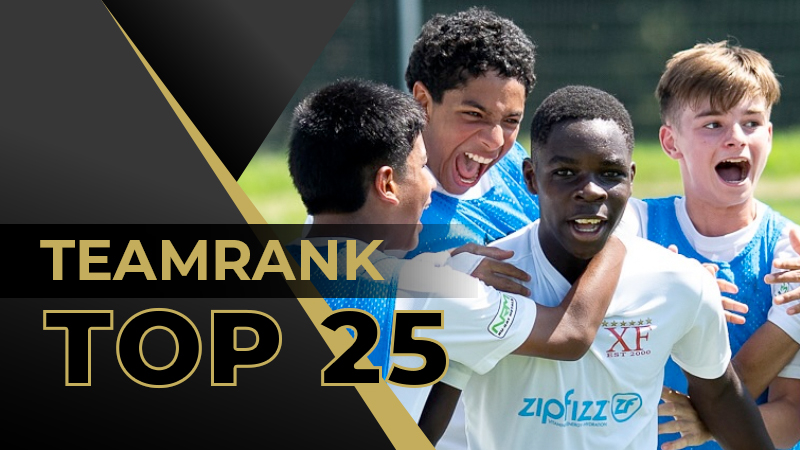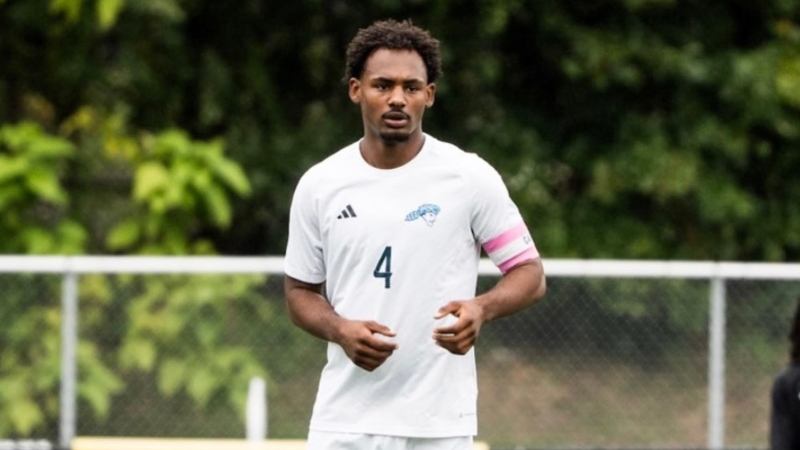Campaign for a cause: U.S.’s new generation

“We want to send a message that it’s never too early to take action and try to take a seat at the table.”
There’s another election in 2020 that has a group hoping young people will get out and vote.
The U.S. Soccer Athletes’ Council, an important but perhaps overlooked group, has 10 spots up for election this year with the nomination and voting process beginning this month. The Athletes’ Council was formed to represent U.S. Soccer athletes’ interest within the Federation.
The current makeup of the group tends toward an older generation that has either exited the game, or nearing the end of their playing days, but there are five players who are looking to change that during the upcoming election: Matt Freese (Philadelphia Union/U.S. U23 Men’s National Team), Mikey Lopez (Birmingham Legion FC/former U.S. Youth National Team), Brianna Pinto (North Carolina/U.S. Women’s National Team), Smith Hunter (Harvard/U.S. Youth Women’s National Team), and Nick Mayhugh (U.S. Para Seven-a-Side).
The quintet began talking about their options months ago when they all found a common interest in helping improve an organization that they all represent, but also an organization and sport that they all love.
“As well as being a player, I’m a fan of U.S. Soccer and I want the best for it,” Freese told TopDrawerSoccer during a video call last week. “In light of so many recent events around the country, this topic along with so many others needs to be recognized.”
While the Athletes’ Council is not normally in the spotlight, the group was on the hot seat in 2018 after the U.S. Soccer Federation elected a new president in Carlos Cordeiro. Former player Hope Solo accused the Council of failing to represent the interest of athletes. The Athletes’ Council holds 20% of the vote for the election.
Beyond the vote for president, the Athletes’ Council holds a significant role in much of U.S. Soccer Federation policymaking. From communicating between the players and federation to representing the interest of all soccer players in the country, the Athletes’ Council is an important part of the growth of the game in the United States.
There are only 20 spots in the Athletes’ Council. The elections are staggered every two years with a four-year term. This year’s election has 10 spots up for nomination and vote.
The players eligible to vote or hold the position must fulfill the requirement of representing the United States in an international game, at a minimum. For players who appear in a World Cup (youth or senior), Olympics, or other international event of similar significance, they are eligible to be nominated and/or vote in the election for the Council for up to 10 years prior to their last game at that event.
The Council’s current group includes former players Carlos Bocanegra, Brian Ching, Landon Donovan, Stuart Holden, Lori Lindsey, and Lindsay Tarpley. The representation of an older group can be attributed to a lack of education about the role of the Athletes’ Council among youth national team players, who are eligible to vote and nominated to the Council following their 18th birthday.
“I didn’t know that it existed until the last election,” Brianna Pinto said. She also said that she picked the names that she recognized when she voted in 2018.
Pinto, Hunter, Lopez, Mayhugh, and Freese are now inspired to join the Council because they want to represent a younger generation, but they also want to bring a different perspective to the group.
Hunter and Pinto would be the only black representatives during the next term, if elected. Pinto said that she never had a black coach while playing for the national teams, which is something that she would like to address in the future if she earned a position on the Council.
Smith would hold another distinction as an Asian-American on the Council. Her mother is Japanese.
Lopez is also passionate about being a voice for a large demographic of soccer players in the United States, who have been underrepresented in leadership and coaching positions at the national team and professional level.
“Being a first generation Mexican-American, there is not enough representation of the Latino or Hispanic community in the Federation,” Lopez said. “Being a part of the Council would be a positive step in having more representation for the Latino community in the country. We are such a big part of this country as well, we should have more representation.”
Lopez and Hunter both spoke about their experiences with the youth game and how they want to bring change to help the next generation.
“One of my first priorities was to expand access to opportunities to soccer players across the nation,” Hunter told TopDrawerSoccer. “As a lower income athlete, I feel like I have a unique perspective on it. It makes me particularly passionate about this part of our platform. From a young age, I’ve always had to find ways to fundraise, to pay team fees, and attend tournaments that ultimately allowed me to be scouted for youth national teams. I did everything from selling water bottles on the Seattle waterfront to selling boxes of cookies in Pike Place Market with my sister.”
“Luckily, I’ve been fortunate enough to pay my team fees with the support of so many people and I’m extremely grateful for those people,” Hunter continued. “That being said, I can’t even imagine the amount of talent that’s out there in the U.S. right now that is just waiting to be found. We all agreed that we have a shared love of the game. Finances shouldn’t become a barrier for a lot of these players and their families. When building our platform, we talked about how in order to produce the very best talent, U.S. Soccer needs to reach every corner of the country to provide playing opportunities to those who cannot otherwise afford them.”
Lopez had a similar experience as a youth player in Texas. He grew up in the town of McAllen, a smaller city near the border. McAllen did not have the elite club teams that could support a talent like Lopez so he ended up moving to Austin, over 300 miles away, and playing for a bigger club there. He gained exposure to college coaches and youth national team coaches once he arrived at the bigger club, but there are many players who do not have the opportunity to move to a larger club that end up falling through the cracks.
Freese offers a different perspective for the group. He came into the professional game via the Homegrown initiative, which he believes would be a crucial perspective to have on the Council given where the professional game is headed.
“We think it’s very important that these athletes are represented specifically by someone who is at the age that he is connected with the current player pool,” Freese said. “As you know, signing deals at the age of 15, 16, 17, it is a new norm within the last years. As the MLS model continues to look more like the European model, it’s important to have their thoughts represented. Not just from the MLS side, but from the Homegrown and younger player side.”
Mayhugh was unable to join the video call on Tuesday, but Pinto expressed some of his ideas for the platform which included doing a better job at U.S. Soccer of celebrating the extended national teams. Mayhugh was not aware of the Para Seven-a-Side team until he stumbled upon an advertisement for it on Instagram that U.S. Soccer had posted.
It was a remarkable discovery for both the player and U.S. Soccer as Mayhugh, who has cerebral palsy, was named the 2019 U.S. Soccer Player of the Year with a Disability after leading the seven-a-side to their first medal at the Parapan American Games in Peru last year. He scored eight goals in a third-place finish for USA. He is currently training to be a two-sport athlete at the next Paralympic Games in Japan by competing in Track and Field.
Mayhugh was teammates with the current Athletes’ Council Chair Chris Ahrens, which has been a blessing for the young group. Ahrens has been excited about the possibility of them joining the Council and offered advice along the way, according to the four of them on the video call on Tuesday.
“He was really supportive of it,” Freese said about Ahrens. “He agrees with a lot of our platform. He was thrilled that we are taking initiative and we are running for this. Ultimately, it is something that should be campaigned for, it’s a very influential position. In that regard, we want to inspire others even if we aren’t elected.”
All five of the members of the group, who go by the name of Next Gen United, have their own reasons for wanting to be on the Council, but they also share a common voice too. Pinto described it as a stronger together mantra, which helped them formulate their platform and build out a website to launch the campaign. Along with a social media push, the group is eliciting the help of former teammates, who are eligible to vote, to make it through the nomination process and earn a spot on the Athletes’ Council.
With a rolodex of names from various national teams, the group has a small army of eligible voters to help push their campaign forward.
“We feel like we all have valuable stories to tell,” Pinto said. “Ultimately, we understand that none of us could get elected, all five of us could get elected, maybe just a couple of us. We want to start the conversation that U.S. Soccer athletes should be invested in their future in advocating for everyone that represents the Federation. I think that it’s not much for personal gain. It’s more how can we help our teammates and for the generations to come, how can we set the tone that it’s never too early to become involved."
Headlines
- Recruiting Roundup: December 22-January 4
- Vote for Men's College Soccer Best Goal
- 2026 Women's Division I Transfer Tracker
- Vote for Women's College Soccer Best Goal
- TDS Fall High School Boys Best XI
- TopDrawerSoccer TeamRank Update - Boys
- TDS Fall High School Girls Best XI
-
Commitments: Decided on Delaware

- TDS Girls Regional Rankings: Class of 2027
-
Draft Picks Who Can Make MLS Impact




